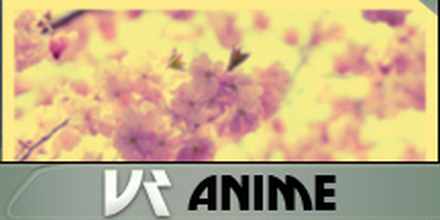Anime music is a vibrant and diverse genre that encompasses a wide range of styles and influences, all tied together by their association with Japanese animation. This genre has evolved significantly over the decades, reflecting the rich cultural heritage of Japan while also incorporating global musical trends. At its core, anime music serves to enhance the storytelling and emotional depth of animated series, films, and video games.
One of the most recognizable sub-genres within anime music is the opening and ending themes. These songs are often high-energy and melodically catchy, designed to capture the essence of the show's narrative and characters. Artists like Linked Horizon, whose work on "Attack on Titan" has become iconic, exemplify this style with their powerful vocals and orchestral arrangements. Themes can range from rock and pop to electronic and classical, depending on the tone and setting of the anime.
Original soundtracks (OSTs) are another crucial component of anime music. Composers like Yoko Kanno, known for her work on "Cowboy Bebop" and "Ghost in the Shell," create intricate and emotionally resonant scores that complement the visual storytelling. These soundtracks often blend traditional Japanese instruments with modern synthesisers and orchestral elements, creating a unique sonic landscape. The music in these OSTs can evoke a wide range of emotions, from the serene and contemplative to the intense and action-packed.
J-pop (Japanese pop) is another significant influence on anime music. Many anime series feature J-pop idols performing their themes, which often become popular in their own right. Groups like AKB48 have collaborated with various anime franchises, bringing a polished and commercially successful sound to the genre. The J-pop influence is evident in the upbeat rhythms, catchy hooks, and often whimsical lyrics that characterize many anime themes.
Anime music also includes vocaloid songs, which use synthetic voices to create unique and often experimental compositions. Vocaloids like Hatsune Miku have gained massive followings both in Japan and internationally. These songs can range from pop and rock to electronic and avant-garde, showcasing the versatility of the medium. The visual component of these performances, featuring animated avatars, adds an extra layer of appeal.
In addition to traditional genres, anime music has embraced electronic and dance music. Artists like coba, known for his work on "Demon Slayer: Kimetsu no Yaiba," create high-energy tracks that blend electronic beats with orchestral elements. The result is a dynamic and immersive sound that perfectly complements the fast-paced action and fantasy settings of many anime series.
The influence of classical music is also prominent in anime soundtracks. Composers often incorporate traditional Japanese instruments like the koto and shamisen, as well as Western orchestral arrangements, to create a rich and textured soundscape. This fusion of East and West is a hallmark of anime music, reflecting Japan's unique cultural identity.
Anime music has a dedicated global fanbase, with many listeners appreciating the genre for its emotional depth and musical innovation. Concerts and live performances featuring anime music are popular events, attracting fans from around the world. These concerts often feature elaborate stage productions, including visual effects and choreographed performances that enhance the overall experience.
In recent years, anime music has also seen a surge in popularity through streaming platforms and social media. Artists and composers use these channels to reach a wider audience, sharing their work and engaging with fans. This digital presence has helped to expand the genre's reach, introducing it to new listeners who may not have been exposed to anime otherwise.
The impact of anime music extends beyond Japan, influencing global music trends and inspiring artists in various genres. Its ability to blend traditional and modern elements, as well as its emotional resonance, makes it a unique and enduring part of the musical landscape. Whether through catchy opening themes, intricate soundtracks, or experimental vocaloid compositions, anime music continues to captivate listeners with its rich diversity and artistic innovation.
The future of anime music looks bright, with new artists and composers constantly pushing the boundaries of what is possible. As the genre continues to evolve, it will undoubtedly inspire new generations of musicians and fans, further cementing its place in the global music scene. From the high-energy themes of popular series to the intricate scores of classic films, anime music offers a rich and diverse listening experience that appeals to a wide range of tastes and preferences.
 2.2k
2.2k
 3
Russia Anime 320 kbps MP3
3
Russia Anime 320 kbps MP3 NAMI Anime RadioNAMI Anime Radio
NAMI Anime RadioNAMI Anime Radio 2k
2k
 1
Russia Anime
1
Russia Anime Rádio J-HeroRádio J-Hero
Rádio J-HeroRádio J-Hero 1.1k
Brazil, Sao Paulo Anime 320 kbps MP3
1.1k
Brazil, Sao Paulo Anime 320 kbps MP3




















